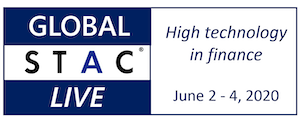The COVID economy: How can the financial technology community help?

By Peter Lankford, Founder & Executive Director, STAC
and Peter Nabicht, Head of Strategy, STAC
The new coronavirus and government responses to it are upending life in nearly every nation on earth. Healthcare providers and researchers are the frontline soldiers in the war against this virus. Governments are constructing obstacles to slow the disease’s advance while trying to cushion the resulting blow to their economies. What about our profession? Aside from our responsibilities as individuals*, what can a capital markets technologist, a technology provider, or someone else in the ecosystem do that would make a difference?
The financial technology community has one responsibility in this crisis that only it can fulfill: ensure that markets serve a rapidly changing economy.
In the immediate term, this simply means keeping things running. As in nearly every other industry, financial technologists must enable the work of their institutions to continue in the face of social distancing. This is challenging (we hear stories of trading firms shipping half a dozen monitors to each trader’s home), but it is getting done.
Once that shift is accomplished, the attention of every organization must turn to performing its market functions in a radically different economic environnment and to be ready for additional storms even after the current one subsides. This evolution is crucial for the stability, liquidity, and efficiency of capital markets.
And these markets matter a lot. While imperfect, they are superb mechanisms for people throughout the economy to transfer risk to those more able to bear it. And by requiring investors to put their money where their mouths are, financial markets communicate some of the best-informed guesses on where capital is needed and which commercial endeavors are likely to succeed. Well-functioning capital markets will be crucial to facilitate repair of the economic damage inflicted by the crisis.
We predict that financial organizations will demand two big things from their technologists.
For trading and investment firms, number one will be increasing the agility of their strategies. Markets as chaotic as these make it crucial to reposition quickly as conditions change. To one degree or another, that requires them to:
- compute risk more quickly and more frequently, over more scenarios
- widen the range of simulations used to develop and backtest strategies
- react faster to market regime changes.
For those firms as well as trading venues, a high priority will be modernizing their infrastructures. Many of them will need to:
- expand the capacity of realtime and historical data plumbing to handle surges
- reduce information and transaction latency
- make analytic infrastructure more elastic and flexible
- reduce the cost per computation
- enable more automated monitoring and control of infrastructure.
STAC's role is to reduce the time and cost for the industry to find the best ways to meet these needs. We are currently speaking with firms in the STAC community about their priorities and how our technology research and dialog can best serve them. If you have thoughts, please reach out or share them with others by commenting below.
---
* And opportunities such as joining the STAC team on Folding @ Home.
About the STAC Blog
STAC and members of the STAC community post blogs from time to time on issues related to technology selection, development, engineering, and operations in financial services.


